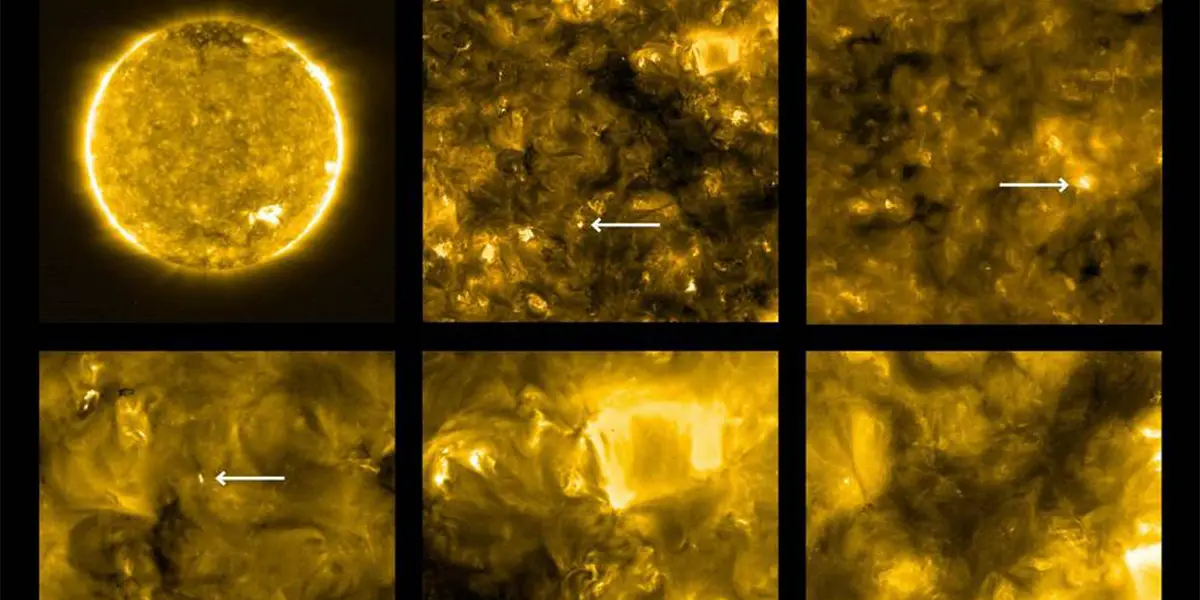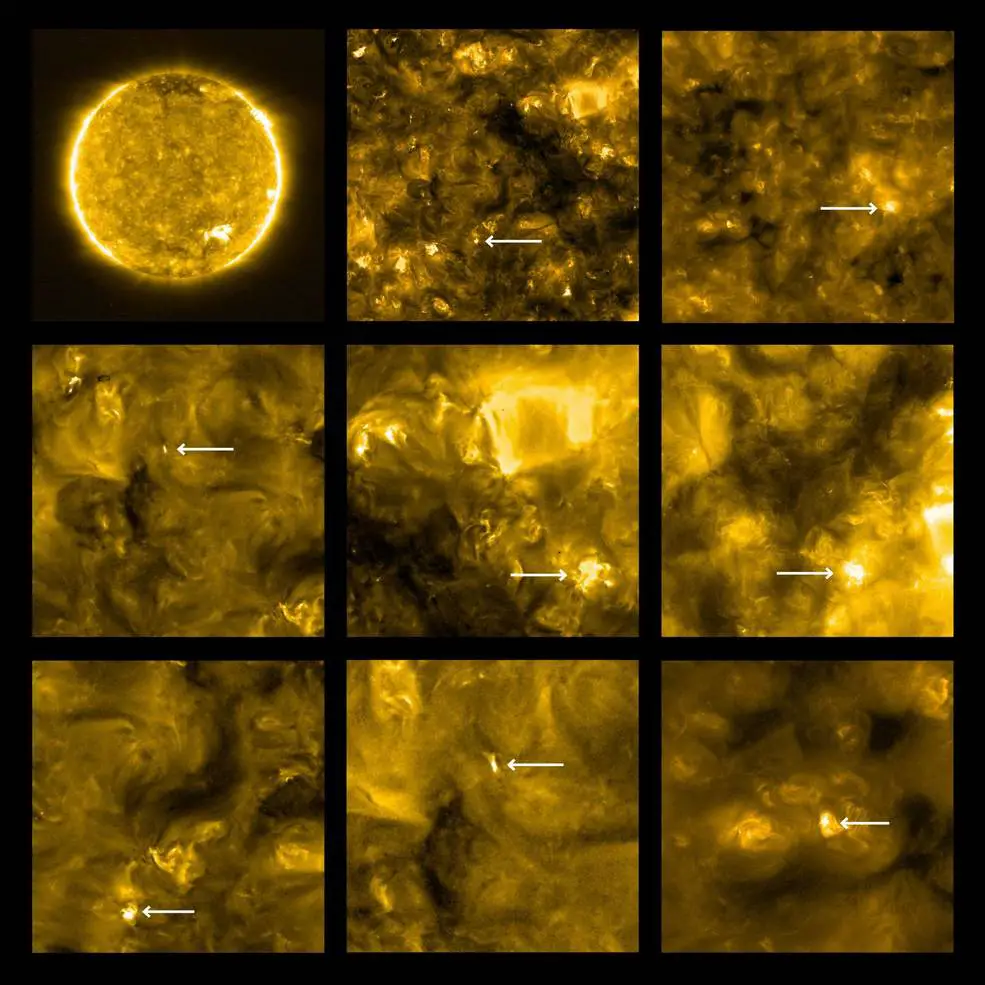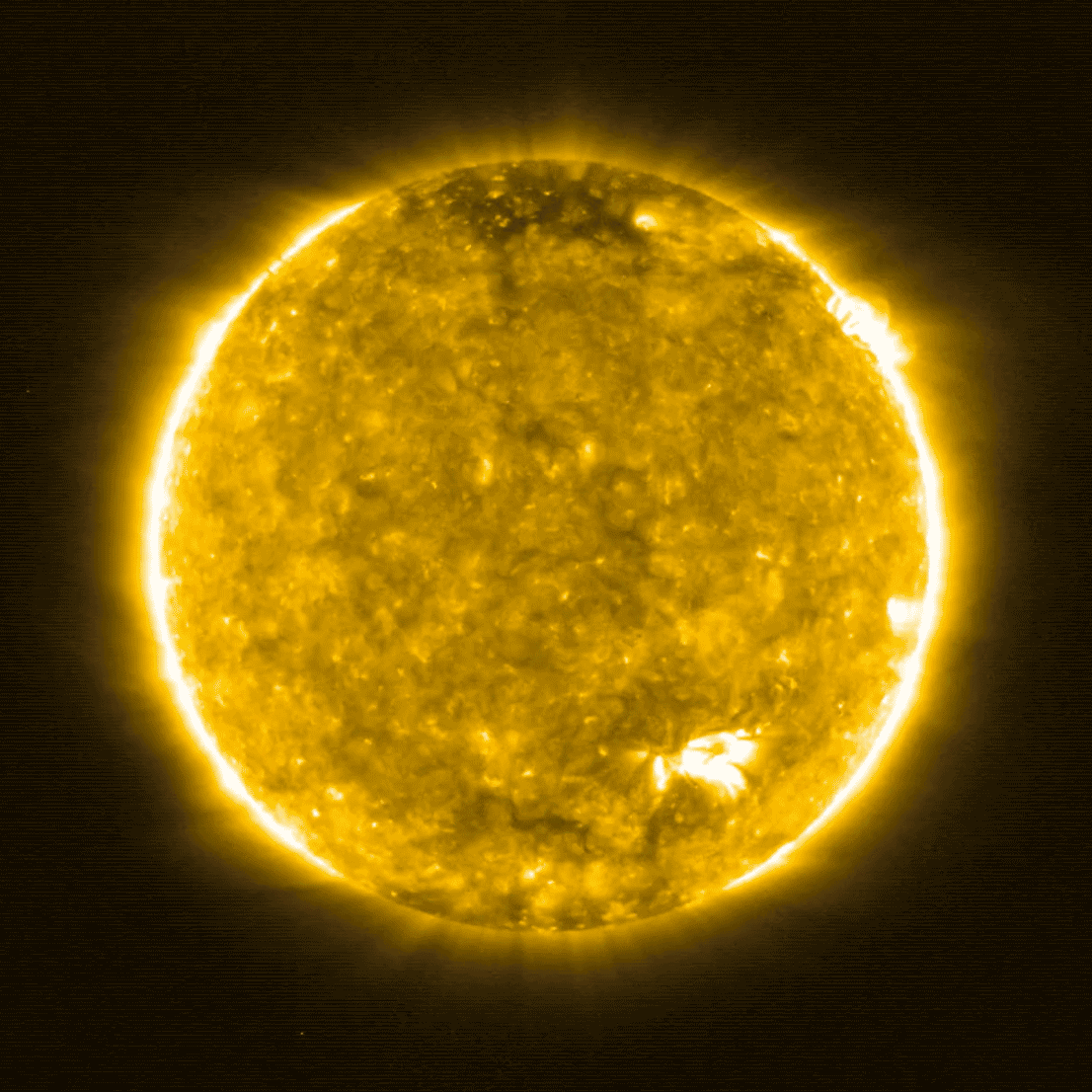Scientist Finds Tiny Solar Flare “Camp Fires” In Closest Pictures Of The Sun Ever Taken
Tags: News

Recently, NASA brought out the closest pictures ever taken of the surface of the Sun. These pictures were a part of a joint collaboration between NASA and ESA for the Solar Orbiter. Interestingly, the surface of the Sun shows solar flares- similar to camp fires, which have been captured in these images. David Berghmans, one of the principal investigators of these pictures mentioned that the camp fires were extremely tiny in nature compared to the solar flares. The difference in size would be almost several hundred million, if not a billion.
Read: NEW TECHNIQUE ALLOWS SCIENTISTS TO ACHIEVE FIRST COMPLETE ASSEMBLY OF HUMAN X CHROMOSOME
The pictures hold more credit when we realize that everyone working on this project (ESOC Germany) had to work from home due to the pandemic. Despite that, they were able to take pictures of these solar flares. On June 15th, the Orbiter came within 50 million miles of the Sun. Next year, the Solar Orbiter is said to pass almost 26.1 million miles close to the Sun.

Camp Fires Up Close
According to Daniel Müller, the Project Scientist for this Orbiter, the closer they can get to the Sun, the better it would for them to click pictures. The camera used doesn’t have any zoom feature. So the only way to click decipherable pictures of the Sun would be to get close to it. Holly Gilbert believes these images would be very useful to observe and understand the atmospheric layers of the Sun. This would also enable them to understand how the Sun drives space weather near our planet.

We are still in the dark about the nature of these solar flares. But we know that each one of them is at least the size of a country. Also, with SPICE, or Spectral Imaging of the Coronal Environments, we would be able to measure the temperature of each solar flare. The Orbiter isn’t just good for clicking pictures- it has a host of other instruments.
Hey, are you on Instagram? Check out the official Truth Theory Instagram page HERE, we upload new content every day.
Frédéric Auchère mentions that they are eagerly waiting for SPICE to give out the test results. Finally, they would be able to piece together the mystery of the solar flares and see if they are important for coronal heating. Müller suggested that solar flares could generate enough power and energy to maintain the entire atmosphere of the Sun.
Poles Coming Up
Right now, the Orbiter is simply in a cruise phase, traversing space for curiosity’s sake. Next year, it will begin its science phase, thereby bringing itself into orbit near Mercury, the planet closest to the Sun. In 2022, the orbiter will shift its trajectory a bit to put it on course for the poles of the Sun. The poles have never been captured on photograph.
Read: RESEARCHERS DEPLOY DISCO LIGHTS IN BOTSWANA TO PROTECT CROPS FROM CROP-RAIDING ELEPHANTS
To make the poles visible to the camera installed in the Orbiter, operators from the ESOC would gradually shift the Orbiter away from the plane of the solar system using the gravity of Venus. This will give the Orbiter a clear view of the poles of the Sun, allowing it to take much deeper pictures of campfires like solar flares.
IMAGE CREDITS: SOLAR ORBITER/EUI TEAM (ESA & NASA); CSL, IAS, MPS, PMOD/WRC, ROB, UCL/MSSL
Leave Comment: